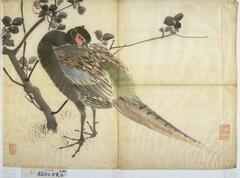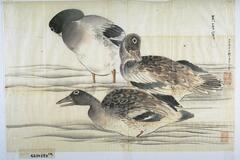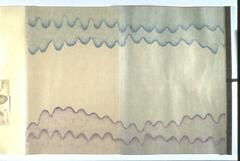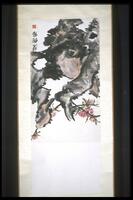180 UMMA Objects
180 UMMA Objects

Mori Tetsuzan (Tessan)
A Pair of Camels
1800 – 1849
Museum purchase made possible by the Margaret Watson Parker Art Collection Fund
1986/1.164

Japanese (Japanese (culture or style))
Demon Soliticing Contributions
20th century
Gift of Rudolf and Mary Arnheim
1989/1.76

Nishiyama Kan'ei
Cherry Branches
1850 – 1899
Museum purchase made possible by the Margaret Watson Parker Art Collection Fund
1990/1.192

Nishiyama Kan'ei
Pheasant
1850 – 1899
Museum Purchase made possible by the Friends of the Museum of Art
1990/1.196

Nishiyama Kan'ei
Ducks
1884
Museum purchase made possible by the Margaret Watson Parker Art Collection Fund
1990/1.198

Nishiyama Kan'ei
Bird on Camellia Branch
1850 – 1899
Museum purchase made possible by the Margaret Watson Parker Art Collection Fund
1990/1.205

Nishiyama Kan'ei
White Egrets under a Tree
1850 – 1899
Museum Purchase made possible by the Friends of the Museum of Art
1990/1.206

Nishiyama Kan'ei
Birds on Camellia Branch
1850 – 1899
Museum purchase made possible by the Margaret Watson Parker Art Collection Fund
1990/1.207

Yokoi Kinkoku (Japanese (culture or style))
Portrait of the Poet 'Basho'
1767 – 1832
Museum purchase made possible by the Margaret Watson Parker Art Collection Fund
1968/2.22

Japanese (Japanese (culture or style))
Ôtsu-e: Demon soliciting alms (Oni no nembutsu)
18th century
Museum purchase for the James Marshall Plumer Memorial Collection
1964/2.102

Japanese (Japanese (culture or style))
Sketches of Flowers: 25 compositions
1695
Museum purchase for the James Marshall Plumer Memorial Collection
1962/2.31
Loading…

